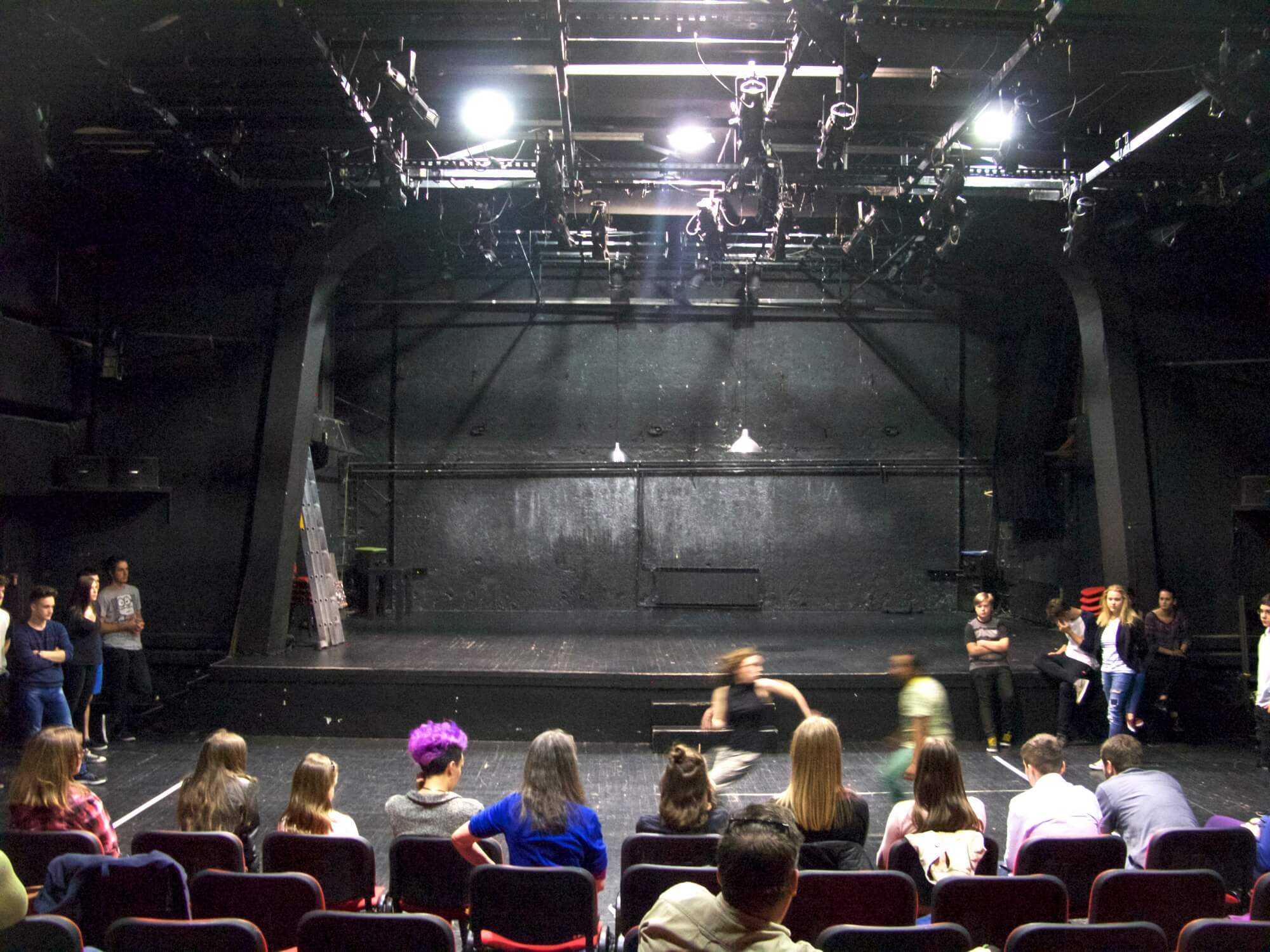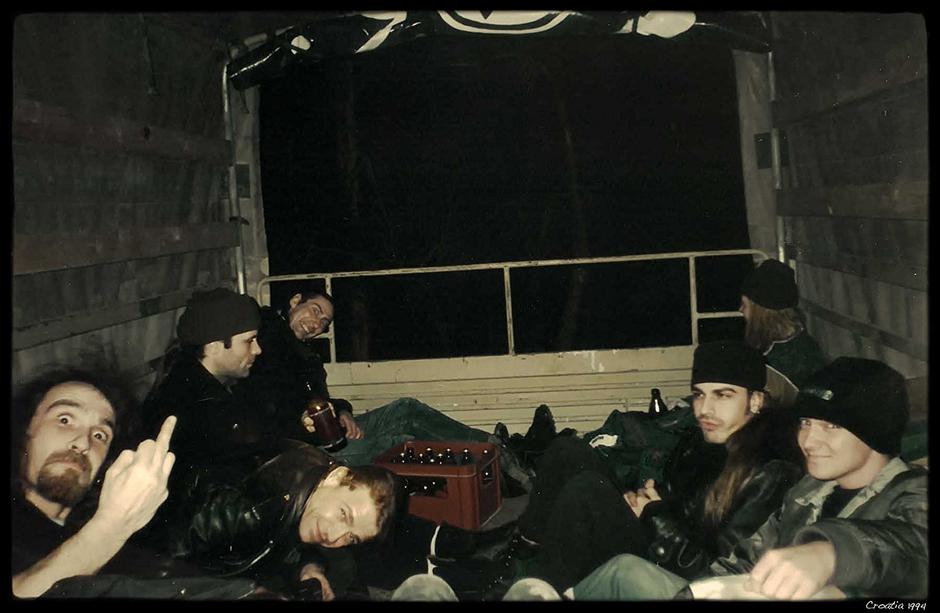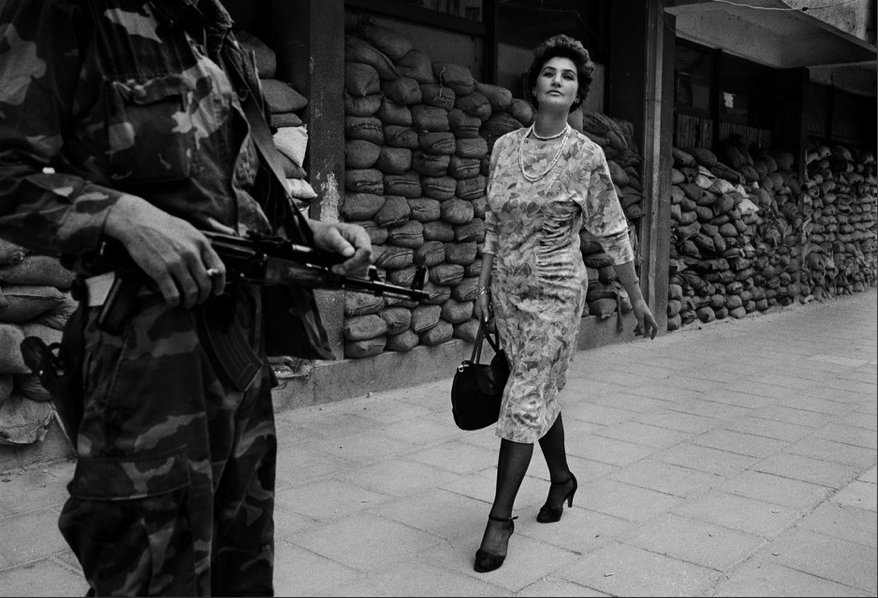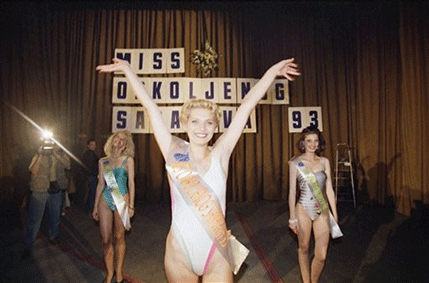Cultural resistance
During the siege of Sarajevo, according to the data of the cultural workers, 3102 art works were created, 48 concerts took place and more than 170 exhibitions. 182 opening nights took place in the theatres in Sarajevo seen by more than half a million of the citizens of Sarajevo. In such a way the citizens of Sarajevo survived as thinking beings, defying with cultural resistance. The books of theatre memories during the war contained sentences such as this one: „Thank you for not letting us go crazy“!
Theatrical „to be or not to be“
In the whirlpool of the most shocking war scenes that even the most famous horror film directors could not come up with, in order to run away from reality, the following people gave the citizens dignity to survive: Dubravko Bibanović, Gradimir Gojer, Đorđe Mačkić and Safet Plakalo. They gathered actors and collaborators and founded the Sarajevo War Theatre (SARTR).
„From that moment people were not moving targets any more but the carriers of civilisation and its positive values“, said director Aleš Kurt for the BH media.
Also, sharing the memory of SARTR, actress Jasna Diklić told the media: „We made sure that muses were not silent when cannons roared “.
The establishment of SARTR, May 17th 1992, was just one of the spiteful ideas of the citizens of Sarajevo who decided to play in spite of shells. During the first year SARTR produced the first war theatre play „Shelter” directed by Dubravko Bibanović.
There were two thousand plays by SARTR during the siege.
Today SARTR gathers young theatrical workers and they produce new plays in the premises of the Centre for Social Activities in Sarajevo.Even though this theatre is the youngest in Sarajevo, its work is a true testimony that human dignity can be saved with culture and art even in the most difficult conditions.

Sarajevo’s Hair
It was very risky to come to the building of the Sarajevo National Theatre during everyday shelling and sniper activities. That does not mean that the actors and directors of the Sarajevo National Theatre did not work. On the contrary. They were very active in other theatres, especially in Kamerni Teatar 55. 28 opening nights took place there during the war.
There were plays by Samuel Beckett, Alfred Jarry, Jean Genet, Eugène Ionescu, Schwartz, Anton Pavlovich Chekhov in Kamerni Teatar55 as well as Sarajevo’s Hair based on the cult rock opera „Hair“ from Broadway. The directors and actors used Sarajevo’s Hair to protest the war with the messages of peace and love.
„Huge crowds came to see the plays and events under candle light in Kamerni Teatar 55 which became a temple of spiritual resistance and healing for all people regardless of their religion and nationality. All events in Kamerni Teatar 55 were crowded despite the danger that the visitors faced“, is stated in this institution.

Shelters
The International Theatre Festival (MESS), run by Haris Pasovic in 1993, brought to the Sarajevo under siege the directorial works of Susan Sontag.
In her play „Waiting for Godot“, whose opening night was on August 17th, 1993, played Ines Fančović, Nada Đurevska, Irena Mulamuhić, Sead Bejtović, Izudin Bajrović, Velibor Topić, Admir Glamočak, Milijana Zirojević and Mirza Halilović.
Pašović gave a gift to the scared people of Sarajevo that year, „Alcestis Euripida“, while Pjer Žalica directed Sophocles’„Ajax“. Each play, each work, each event represented spiritual food for hungry citizens and some plays took place even in hospitals.
The war animation film “The Provocation of the Senses” by Nedžad Begović was also promoted in Sarajevo in 1993. Another shelter for the people of Sarajevo was the Apollo War Cinema where the first shown film was “Terminator”. The Sarajevo Film Festival took place in the December of that war year.
Besides theatre, films and the festival, the people of Sarajevo defended themselves by means of other musical directions.
Famous world artists sent their works for exhibition in Collegium Artisticum. Artist Braco Dimitrijević presented in Sarajevo the installation „Trypticus Post Historicus“. Unfortunately, many works of art and galleries were burnt down or destroyed due to shelling during the siege. Some were unfortunately stolen. However, the city lives. The city also lives through the tour of the group “Zoo TV” in 1993. Bill Carter, an American director and humanitarian, got in touch with the group to try to direct attention to the siege of Sarajevo. U2 organised satellite links during their concerts by means of which the people of Sarajevo sent messages. The group could not come to Sarajevo because of war activities but they promised that they would organise a concert in Sarajevo. And they did, after the war, at the Koševo Stadium in 1997.
Iron Maiden entered Sarajevo under siege in 1994. They held a big concert for 1000 people and two acoustic sets in the orphanage and in the UN’s firehouse. 50 workers attended. Their arrival in Sarajevo under siege was described in the film “Scream for me Sarajevo”.
At the beginning of 1994. Barbara Hendrix held the New Year’s concert in Sarajevo.
On the day when the Dayton Peace Agreement was signed, the cult band Laibach held their historic concert in war Sarajevo.
Even there where it seemed impossible, the people of Sarajevo lived. Mozart’s Requiem was played in Sarajevo’s burnt City Hall.
Spirit was, of course, saved thanks to local musicians and artists who strengthened patriotism and the will to live by means of creation.

The most beautiful even when it was the most difficult
Many girls and women were involved in the military units that defended Sarajevo and many, unfortunately, did not get to see the end of the war. The others defended the city working, sawing, waiting in risky food queues, humanitarian aid or creating plays for children so as to keep them in basements and protect them.
In all that they made efforts to be equally courageous and proud, creative and diligent such as when they started to make pie with rice as cheese pie or the magic yeast pate’ (that grew and grew no matter how much was eaten). In everything, they tried, even though they did not have even basic conditions to live, to be even beautiful.
One of them was Meliha Varešanović who mesmerised the world, unknowingly, in 1994. Dressed up, as if she had been going to have fun or to a catwalk, she would pass by soldiers while one could see a safe house with sand bags in the background. These details from Dobrinja, a Sarajevo suburb under siege, were taken by British photo reporter Tom Stoddart.

Even the competition Miss 1993 was held in Sarajevo under siege. Beautiful Inela Nogić won that competition. The Miss of Sarajevo under siege became a symbol of theresistance of the capital of Bosnia and Herzegovina. During a conversation with the portal Klix she remembered that event.
„The girls were united. We shared makeup, supported each other…it was beautiful socialising under spotlightsand an escape for all participants from cruel reality. Therefore I think we are all winners because we were all courageous to come to BKC and defyall that evil”, said Nogić in the conversation, adding that the event was marked by many anecdotes such as making dye using „kabaš“ soap.
“Miss Sarajevo” is also the title of the song that legendary Bono Vox dedicated to Inela Nogić who was on tour with the group U2 in 1997.

